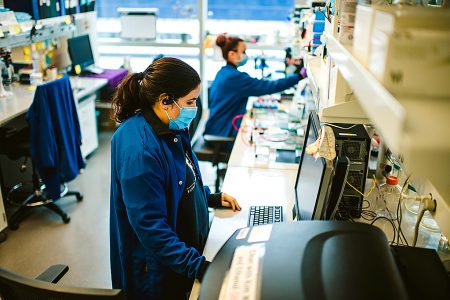Biomedical engineering weaves a strong life science foundation with multidisciplinary engineering fundamentals for investigating and understanding living systems, using quantitative assessment tools, engineering living systems, and developing novel biomedical sensors and devices. The biomedical engineering undergraduate and graduate degrees provide an education at the interface of engineering and biology, concentrated in tissue engineering, biosignals and systems, biomaterials, and biomechanics. Review Computer Recommendations for this degree.
Biomedical Engineering
Accelerated BS/MS, Bachelor of Science, Biomedical Engineering, In-Person, Masters, PhD
